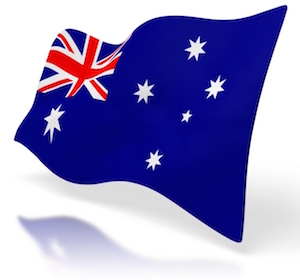 Several years ago Australian courts were coming up with their own version of Alice, the Research Affiliates LLC v Commissioner of Patents [2014] FCAFC 150 and Commissioner of Patents v RPL Central Pty Ltd [2015] FCAFC 177. These Australian cases are similar to Alice and in fact rely on Alice to a degree. Subject-matter eligibility in Australia essentially requires that a software implemented invention improve computing.
Several years ago Australian courts were coming up with their own version of Alice, the Research Affiliates LLC v Commissioner of Patents [2014] FCAFC 150 and Commissioner of Patents v RPL Central Pty Ltd [2015] FCAFC 177. These Australian cases are similar to Alice and in fact rely on Alice to a degree. Subject-matter eligibility in Australia essentially requires that a software implemented invention improve computing.
In response to these Australian cases I mined my company employer for subject-matter eligible inventions and filed twenty or so priority applications in short order. While churning out patent applications, I’d used expedited examination offered by IP Australia and received Acceptances (i.e., Allowances) on a number of applications quite quickly, including several over Research Affiliates and RPL.
The company had planned and then went through an IPO. After that, as is unfortunately common in Australia, the Board decided new patent applications weren’t all that important to the company’s core business. I moved my practice to a boutique firm with a strong domestic practice, Franke Hyland. Now I could use all that I had learned relating to software inventions and patenting in Australia for many clients. What had I learned? I learned how to quickly obtain patents in Australia, which while not particularly attractive for some clients should be far more desirable given the considerable benefits provided by the many Patent Prosecution Highway (PPH) bilateral fast-track agreements Australia has with Patent Offices around the world.
In Australia, there is no charge to have the examination of a patent application expedited. That is, upon filing, if you check the box for “expedited examination” and give a reason like “commercial reasons,” it is done. An Examiner’s Report will be provided in less than two months.
Also, the IP Australia rules say the prosecution must be completed within one year from the first Examiner’s Report (Office Action). That is, there is no “non-final” and “final” Office Action. You have the ability to communicate with the Examiner as many times as it takes to get something allowed, as long as it is within a year of the first Examiner’s Report. Of course, you can file a continuation application (called a divisional here) if need be.
Another difference in prosecuting in Australia is that if you make an amendment adding a new limitation not previously presented in the originally filed claims, you won’t trigger a final office action. You can amend the claims pretty freely as long as there is support in the description. In fact, you can add new claims, including independent claims, during prosecution without consequence unless they trigger a unity objection. With this flexibility you can test the prior art waters and end up with a claim set that you are more sure will be allowable in the US.
IP Australia actually has built into its quota system a driver for completing prosecution of open cases before taking up new cases. Therefore, there is a rule inside IP Australia that an Examiner must respond to communication from an applicant within 20 days of receiving the applicant’s communication. Oftentimes, it is sooner. Therefore, an application will not languish at the bottom of the Examiner’s work pile and the case will get attention from the Examiner in short order.
Another difference in filing in Australia as opposed the US, is that there is no charge for filing claims in excess of 20. If more than 20 claims are accepted, there are fees required when paying the Issue fee for the excess. That means you have more flexibility during prosecution.
Also, the exchange rate for US dollars and Australia dollars is currently quite favourable to US dollar holders. So when comparing the cost of expedited exam in the US to that of Australia, don’t forget to factor in the exchange rate. It has been quite steady lately.
Once an Acceptance (Allowance) is issued, you can hop on the Patent Prosecution Highway. You don’t have to wait until grant. You just need that acceptance letter. That means you can jump to the front of the examination queue in the US and a bunch of other countries. My colleague, Peter Franke, said that he has for some clients, received acceptance in Australia and allowance in the US all within a year of filing in Australia using expedited examination at IP Australia and using the PPH.
Prosecuting an application before IP Australia can enlighten the IP owner about prior art allowing them to adjust their claims before the application is prosecuted at the USPTO. While the USPTO examiners will not rely on an IP Australia search, the Australian patent examiners do a pretty good job. As any patent attorney knows, there are no guarantees that a search will find all the art that there is to find. We think the chances of surprise prior art unearthed by the USPTO, however, can be mitigated by searches by IP Australia examiners done in advance of prosecution in the US.
While Australia isn’t usually considered a very important market since its population is so small and its manufacturing base is limited, it is our experience that there are a few US companies realising that prosecuting in Australia to use the PPH back into the US makes sense. There is always the option of filing in Australia first and using an Australian patent application as the priority application. However, one would need a foreign filing license from the US before doing so. A strategy could be to file a provisional in the US, receive the foreign filing license, and then file a standard (utility) application in Australia to take advantage of the expedited examination process at IP Australia to hop onto the Patent Prosecution Highway via Australia.

![[IPWatchdog Logo]](https://ipwatchdog.com/wp-content/themes/IPWatchdog%20-%202023/assets/images/temp/logo-small@2x.png)

![[Advertisement]](https://ipwatchdog.com/wp-content/uploads/2024/04/Patent-Litigation-Masters-2024-sidebar-early-bird-ends-Apr-21-last-chance-700x500-1.jpg)

![[Advertisement]](https://ipwatchdog.com/wp-content/uploads/2021/12/WEBINAR-336-x-280-px.png)
![[Advertisement]](https://ipwatchdog.com/wp-content/uploads/2021/12/2021-Patent-Practice-on-Demand-recorded-Feb-2021-336-x-280.jpg)
![[Advertisement]](https://ipwatchdog.com/wp-content/uploads/2021/12/Ad-4-The-Invent-Patent-System™.png)







Join the Discussion
3 comments so far.
Paul F. Morgan
August 9, 2016 08:34 amIf the U.S. had an examiner requirement like this [to respond to pending application responses in a defined time before taking up new applications], in one swoop “submarine applications” could be eliminated and efficiency greatly improved by taking up pending applications while they are still fresh rather than stale, and no longer being able to pass tough bucks on to successor examiners to start over.
Lost In Norway
August 9, 2016 05:33 am(that 🙂 was supposed to be a smiley face…
Lost In Norway
August 9, 2016 05:31 amThank you for your article. Extra business won’t hurt your patent office or your company, but your facts hold up 🙂 I have to admit that I have never thought of filing in Australia for PPH. However,I have done it directly for a few costumers.
How does this compare in time to the usual “pronto-Toronto” approach used in the US (filing in Canada then using PPH)?